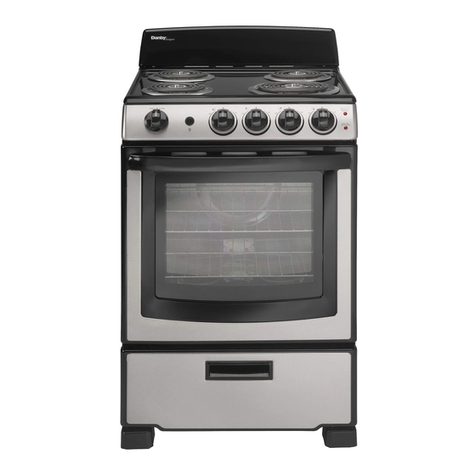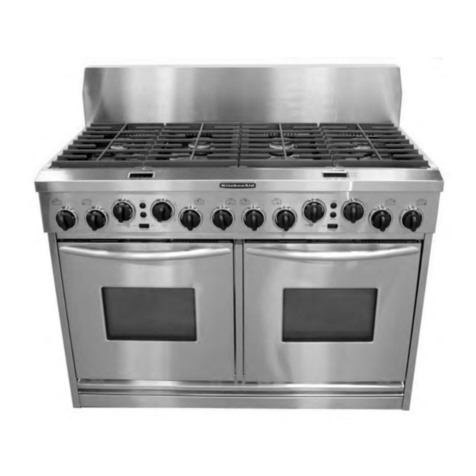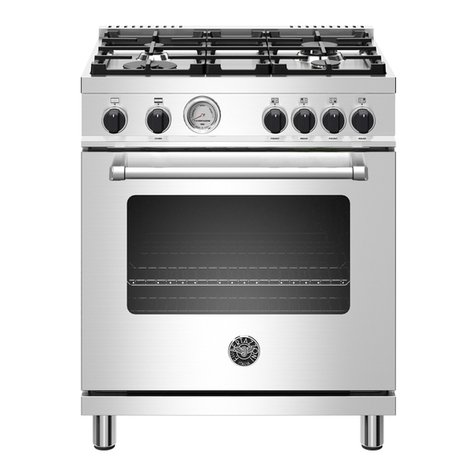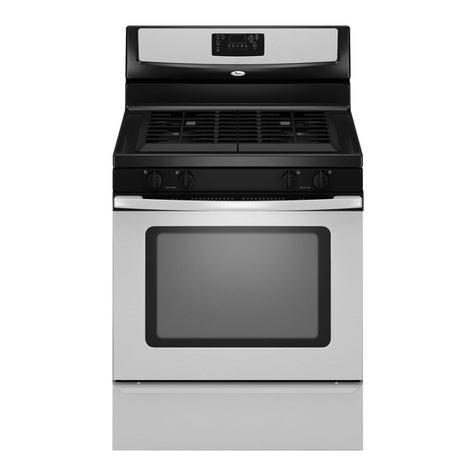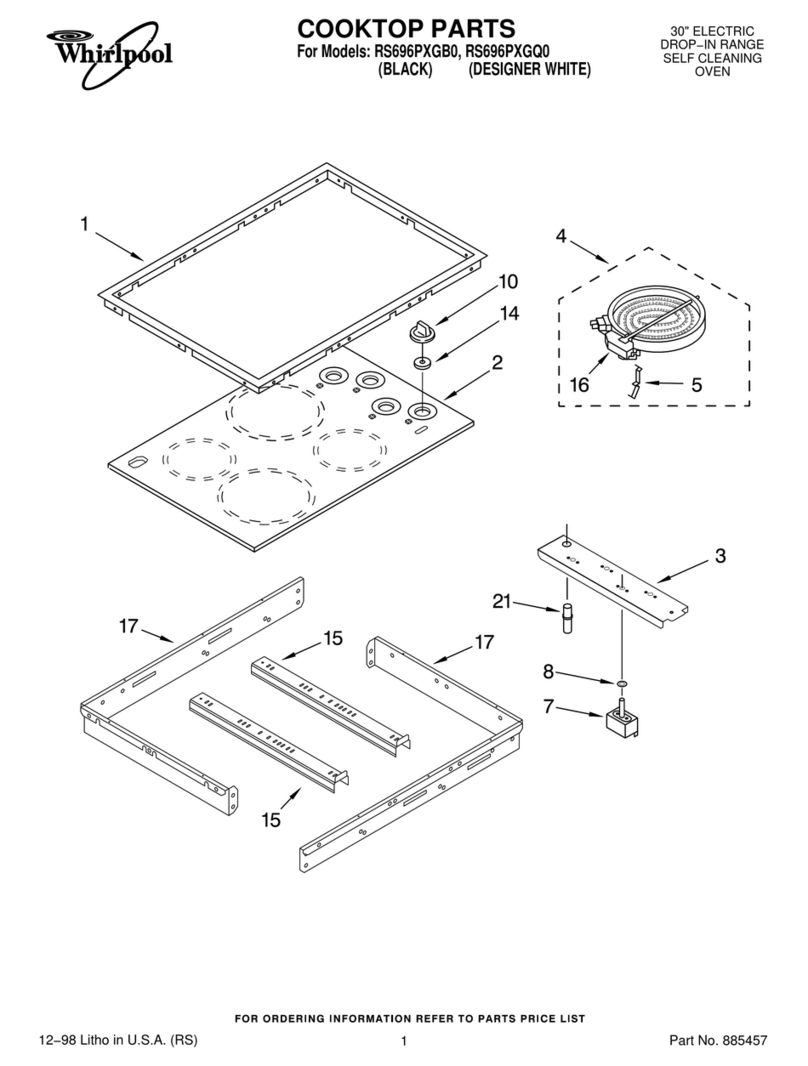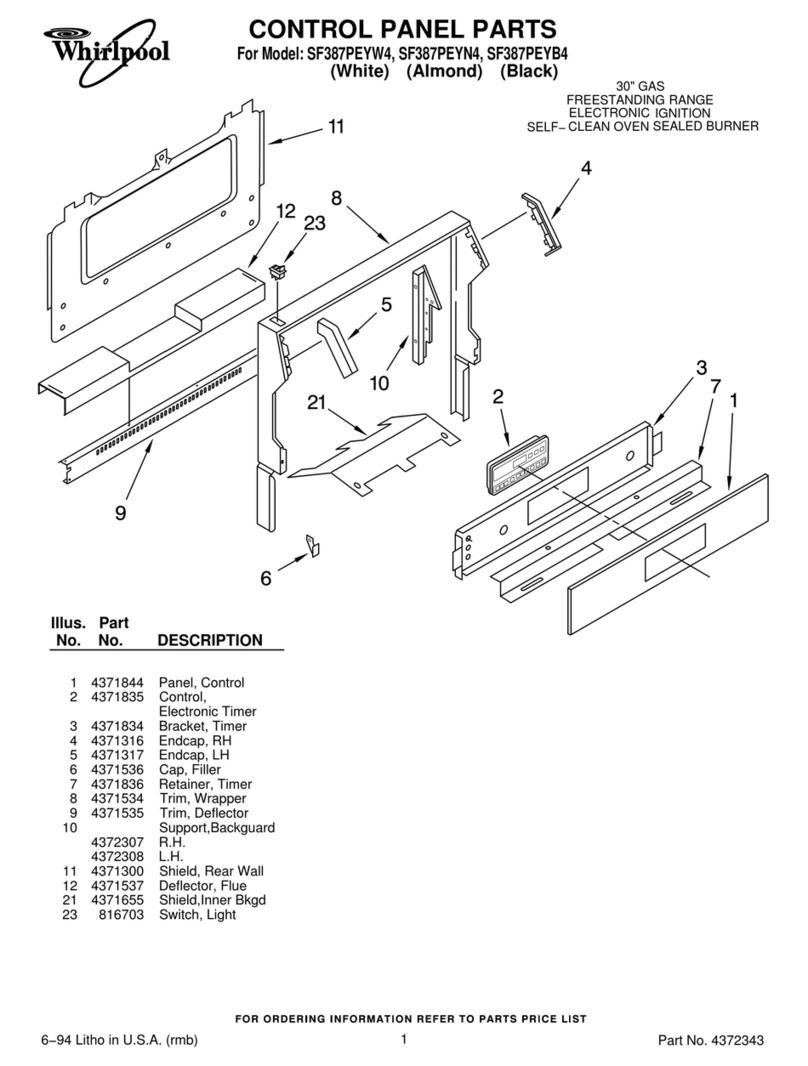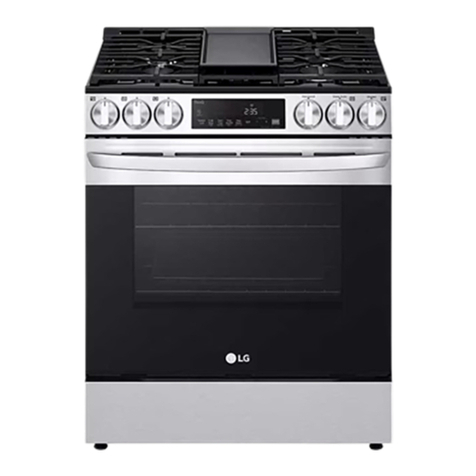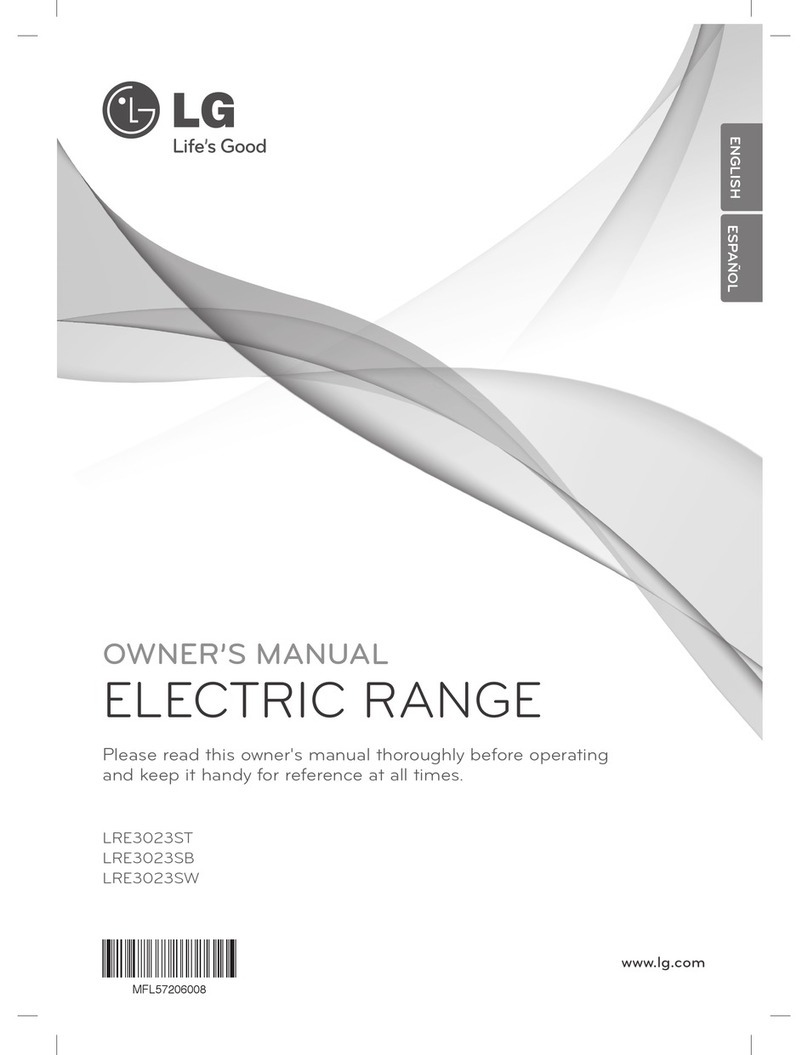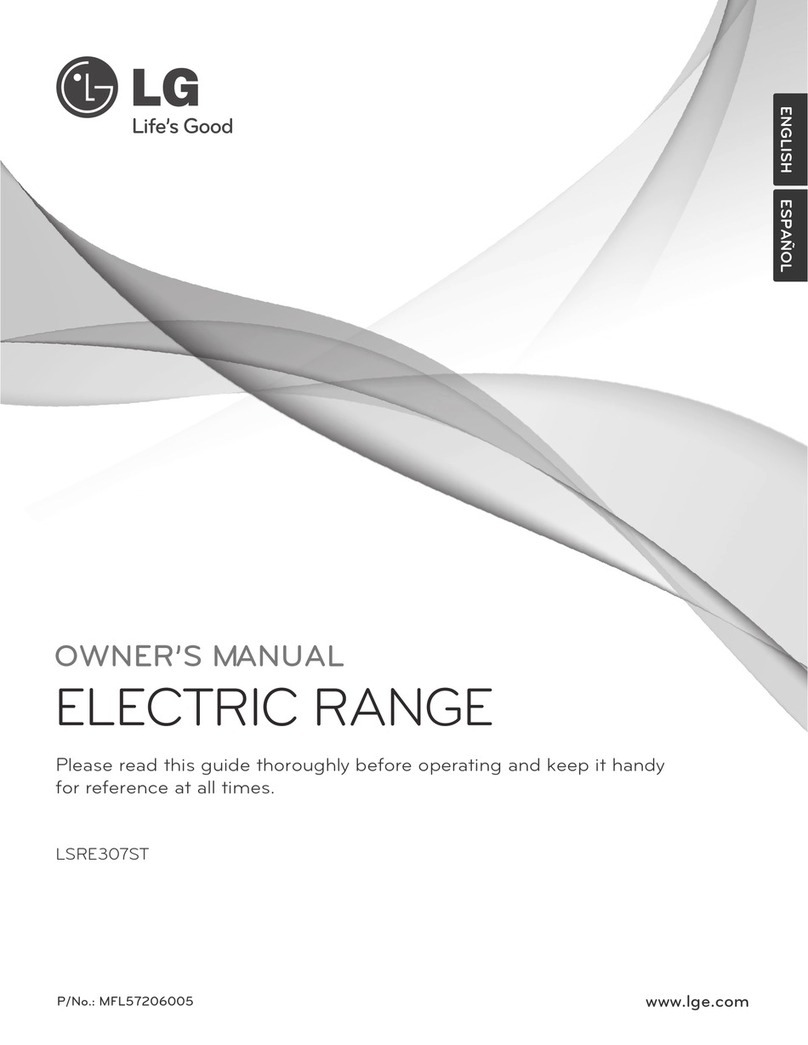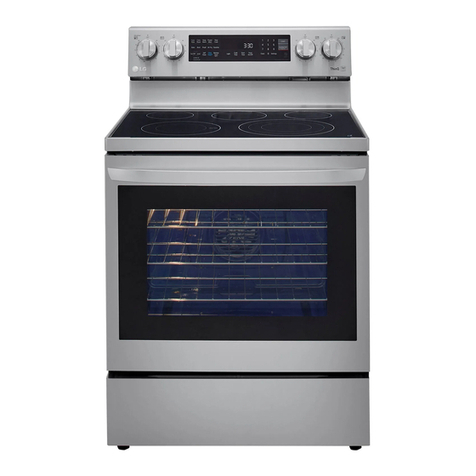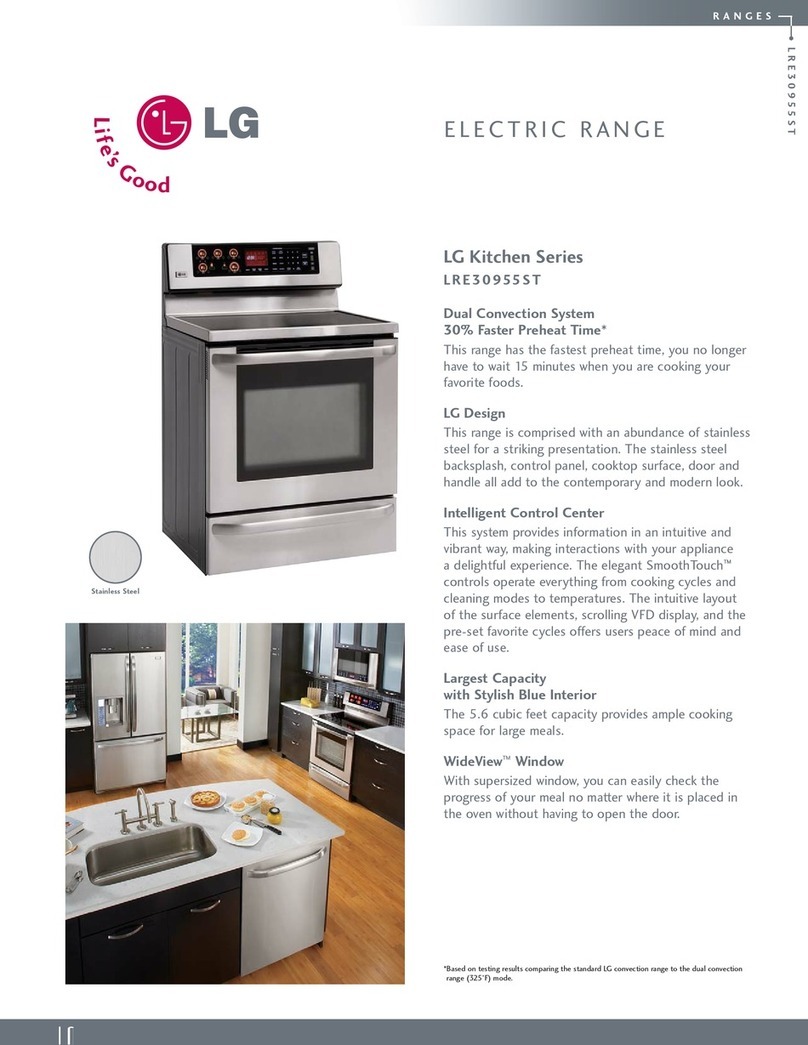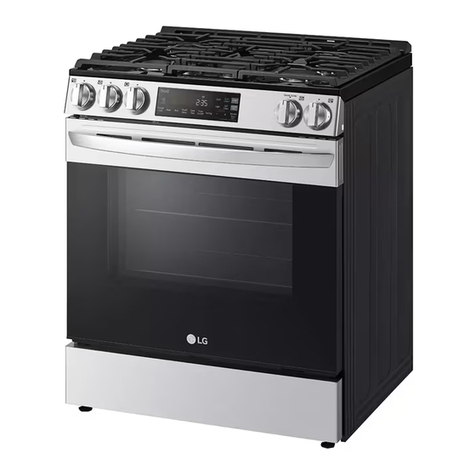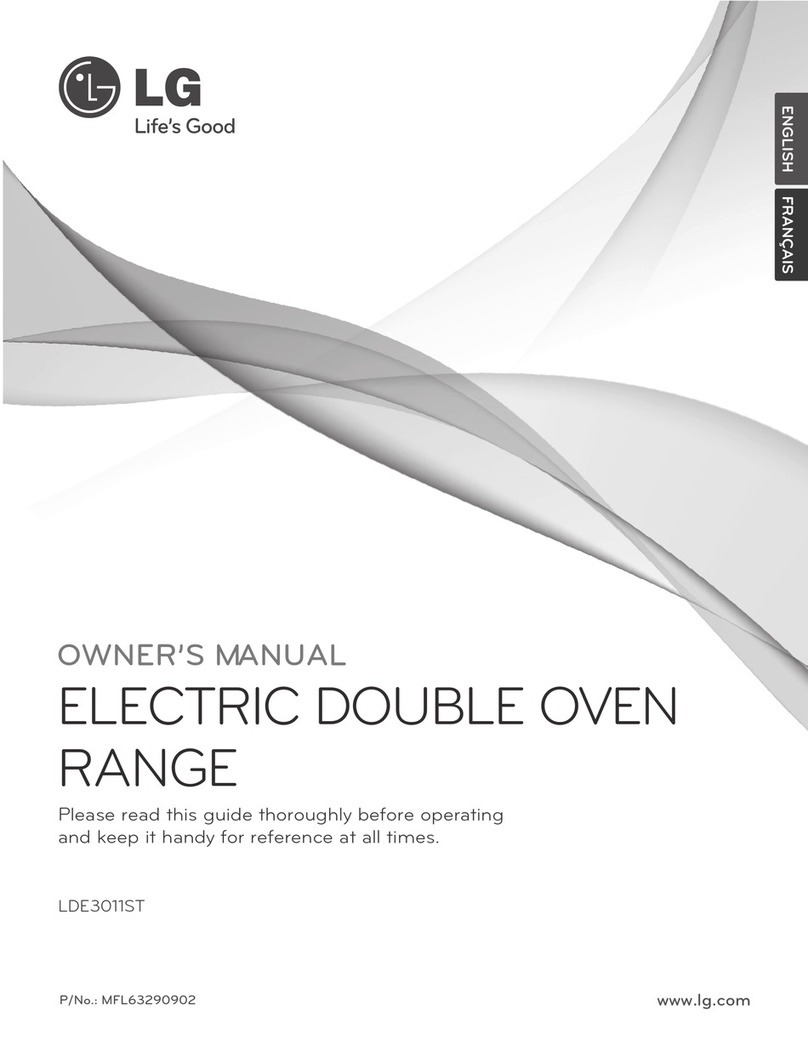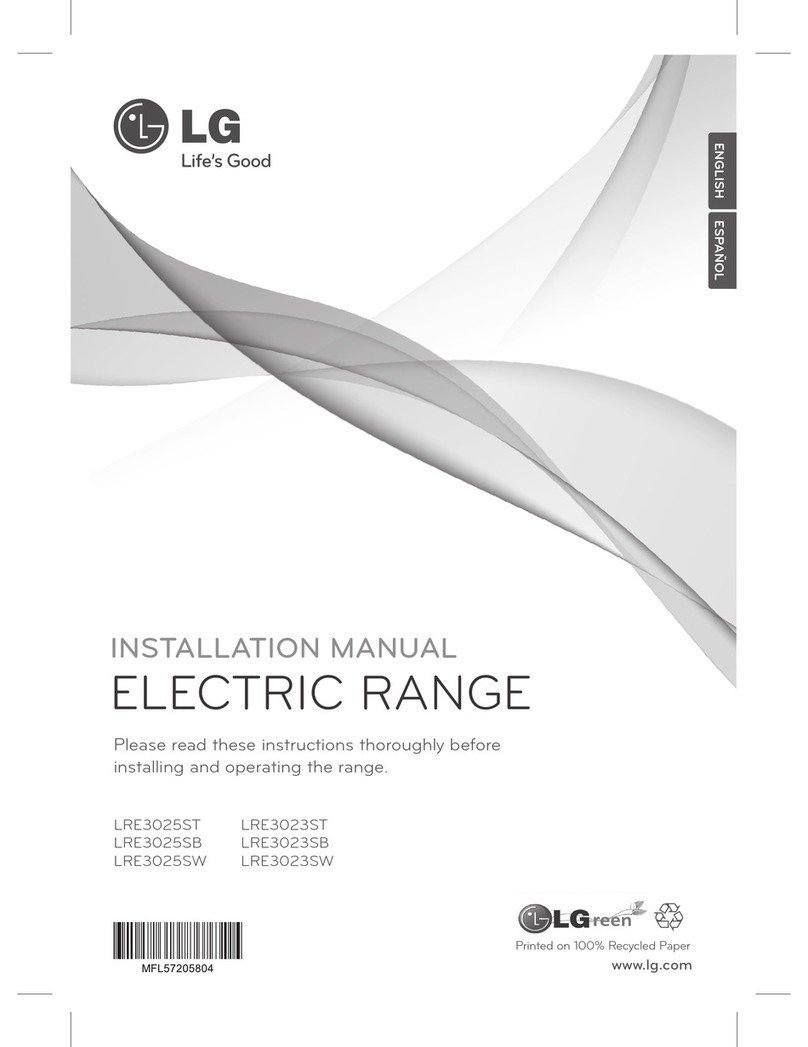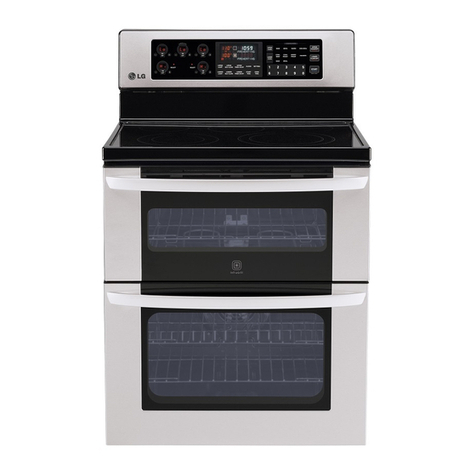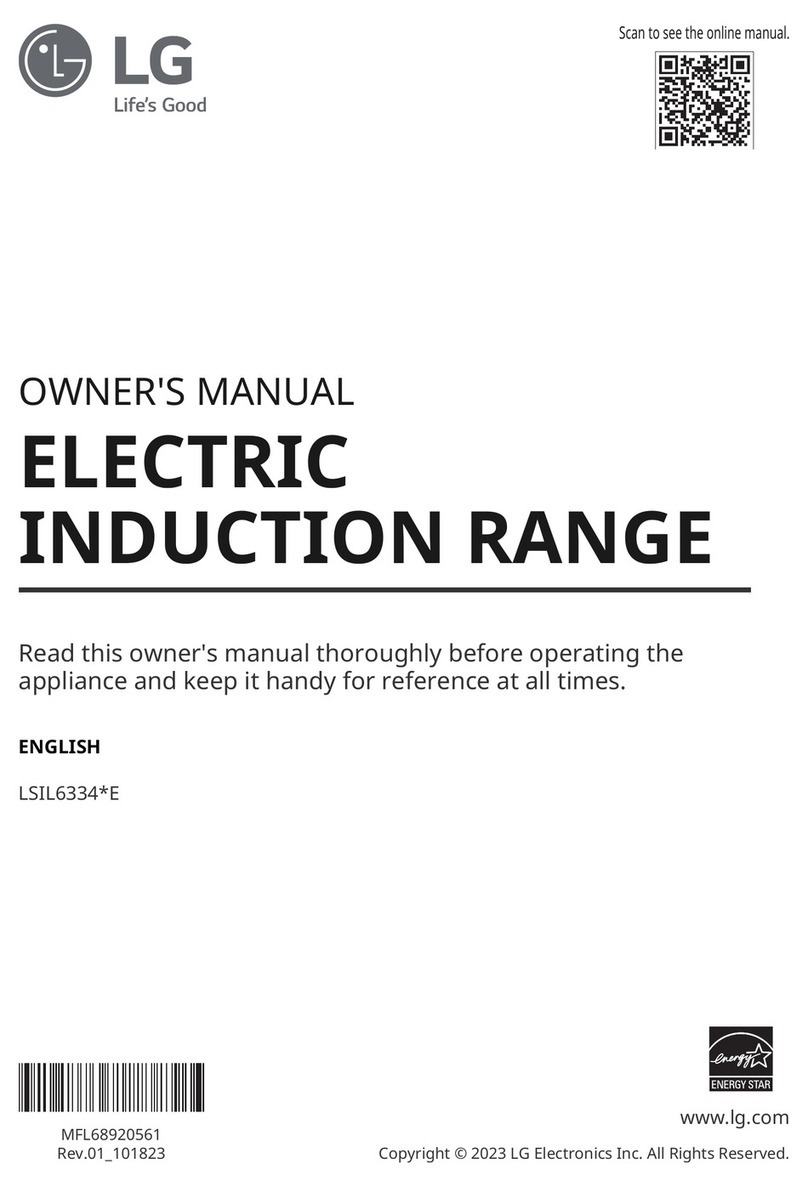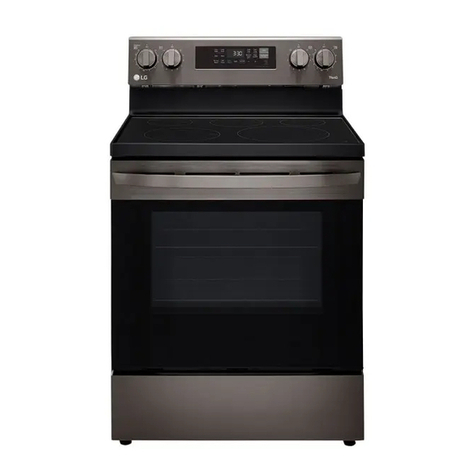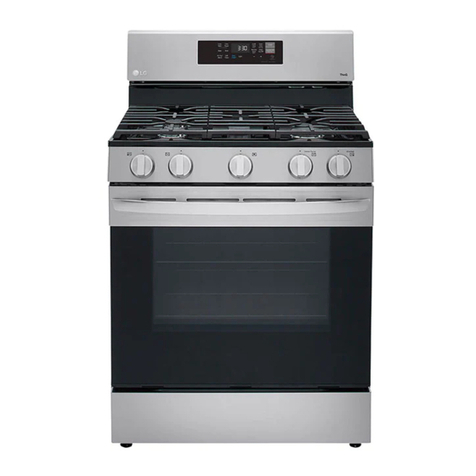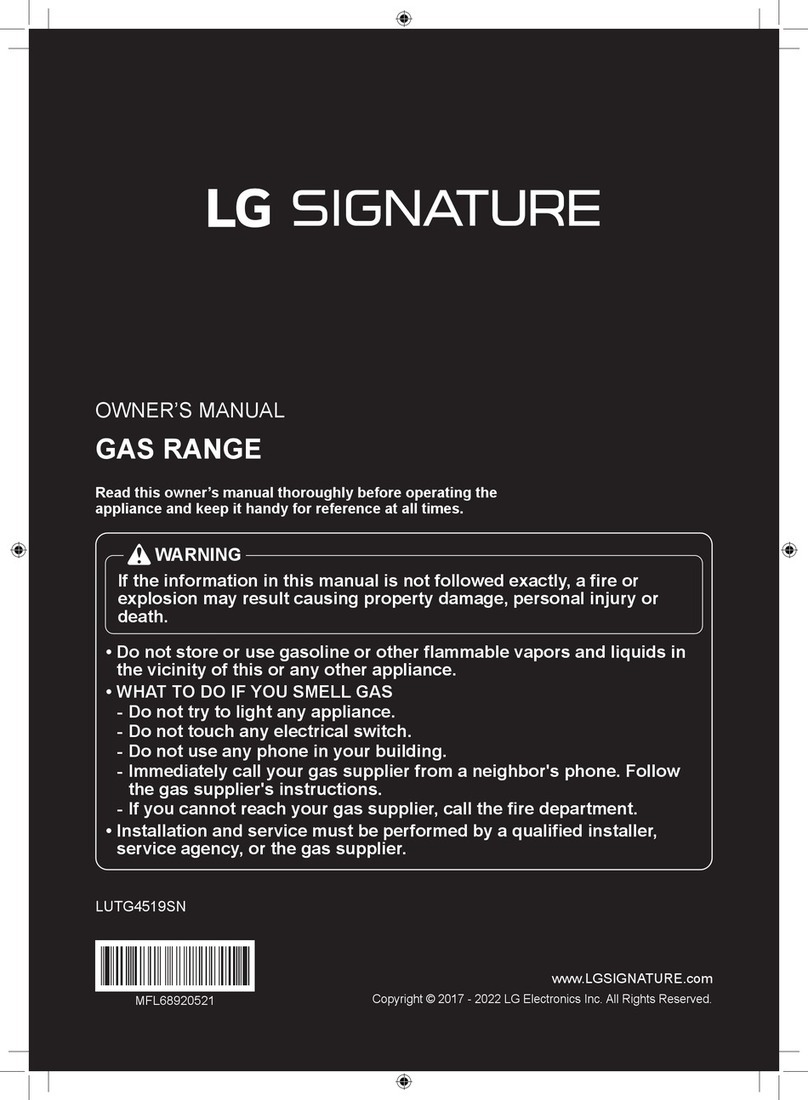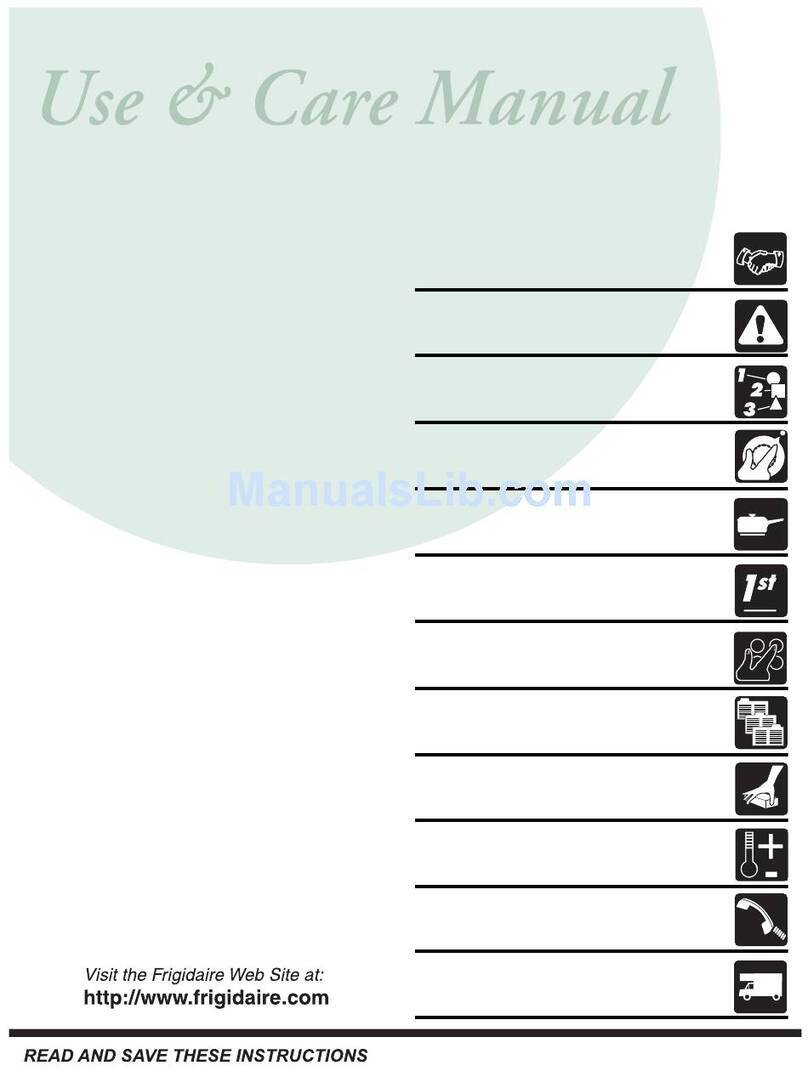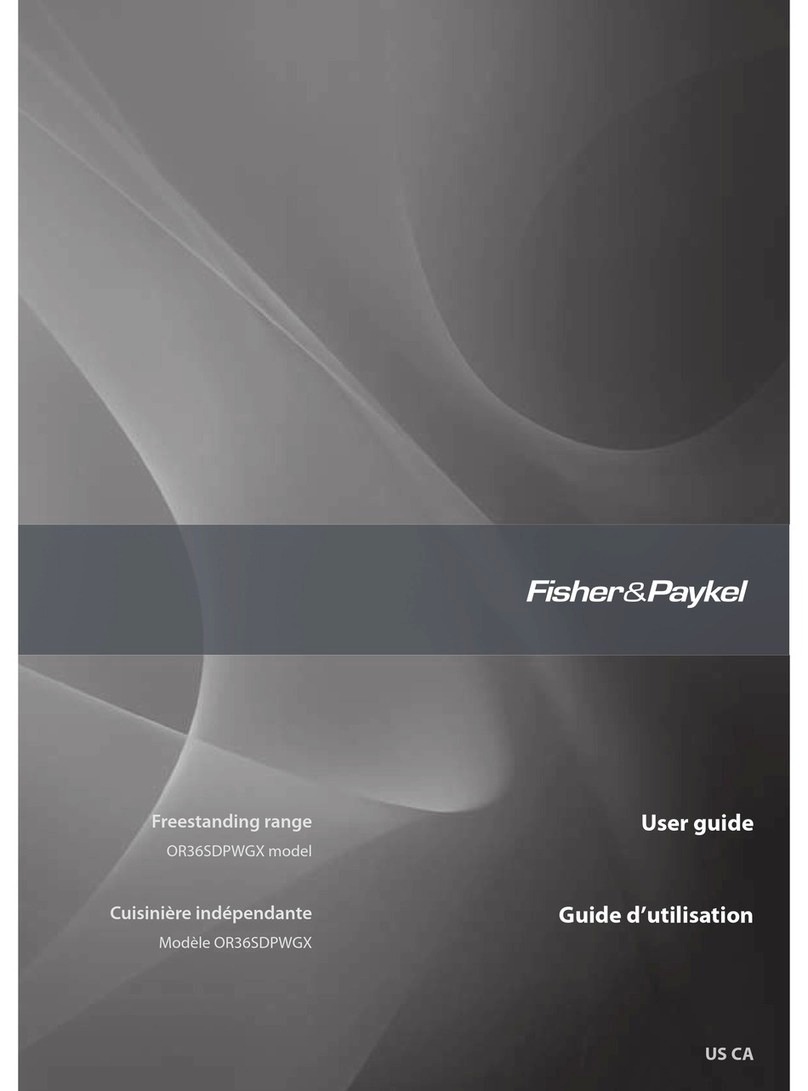
8
Sección 3
CONEXIONES ELÉCTRICAS
Conexión de 4 alambres
con un cable de alimentación Conexión de 3 alambres
conducto portacables
Para instalar correctamente el tensor de alivio, siga
las instrucciones “ CÓMO CONECTAR EL CABLE
DE LA ESTUFA” en la página 5.
1.
Quite los tres tornillos inferiores del bloque de
terminales y consérvelos. (Ver Figura 9).
Quite el tornillo a tierra y consérvelo.
2. Retire la conexión de descarga a tierra y deséchela
como puede verse en la Figura 9.
No deseche los tornillos.
3. Introduzca el tornillo a tierra en el anillo de terminal
de tierra del cable de energía y fíjelo al marco.
4. Introduzca los 3 tornillos a través de los anillos
de las terminales del cable de energía y dentro de
las terminales inferiores del bloque de terminales.
Verifique que el cable central (blanco/neutral) esté
conectado en la posición inferior central del bloque
de terminales. Ajuste bien los 3 tornillos al bloque
de terminales.
5. Diríjase a la página 9.
Instale el conducto portacables de la
manera siguiente:
Q
uite la placa de conexión de conductos portacables de la
parte posterior del cuerpo del cajón y déle vuelta como se
muestra en la figura 5. Debe usarse el orificio de conducto
portacables (1
1
/
8
” (2.8 cm)).
En primer término, prepare los cables del conducto como
puede verse en la Figura 10.
En segundo término, instale el conducto pasacables como
puede verse en la Figura 6.
Para instalar conductos pasacables, después de adquirir un
aliviador de tensión, introdúzcalo en el orificio del conducto
pasacables (1
1
/
8
” (2.8 cm)). Luego instale el conducto a través
del cuerpo del aliviado de tensión y sujete el aliviador de
tensión con su anillo. Vuelva a instalar el soporte.
Para la conexión de conductos portacables :
Si el cable del conducto es cobre, la conexión eléctrica debe ser
de 8 o 10 AWG.
Si el cable del conducto es aluminio, la conexión eléctrica debe
ser de 6 o 8 AWG.
1. Afloje los 3 tornillos inferiores del bloque de terminales. (Ver
Figura 11).
2. Introduzca el extremo del cable desnudo (blanco/neutral) a
través del centro del orificio del bloque de terminales.
No quite las conexiones de descarga a tierra.
3. Introduzca los dos extremos de cable desnudo en los orificios
del bloque de terminales inferiores izquierdo y derecho.
Ajuste bien los 3 tornillos en el bloque de terminales
(aproximadamente 35 - 50 pul/lb)
4. Diríjase a la página 9.
FIGURA 10
or
3 alambres 4 alambres
FIGURA 7
Conexión de 4 alambres
ADVERTENCIA
• Sólo deberá utilizarse un equipo con cable de
energía de 4 conductores clasificado 120/240 voltios,
50 amperios y marcado para utilizar con cocinas con
conectores de bucle cerrado o pernos de pala de
extremos abiertos con bordes elevados. La clavija
media (neutral) del cable de energía o conducto de
4 clavijas debe conectarse a la posición media del
bloque terminal principal. Las otras dos clavijas del
cable de energía o conducto deben conectarse a las
posiciones externas del bloque de conexión terminal
principal. La cuarta clavija a tierra debe conectarse
al marco de la cocina con el tornillo a tierra.
- No hacerlo puede provocar una descarga eléctrica,
lesiones personales graves o la muerte.
FIGURA 11
Conexión de 3 alambres
4




















